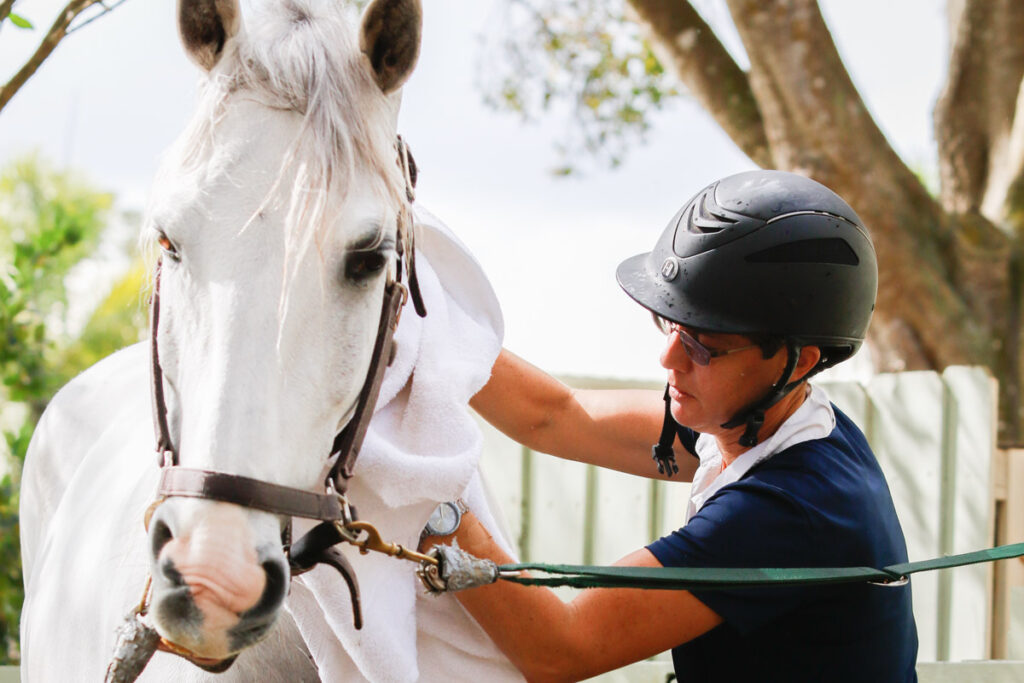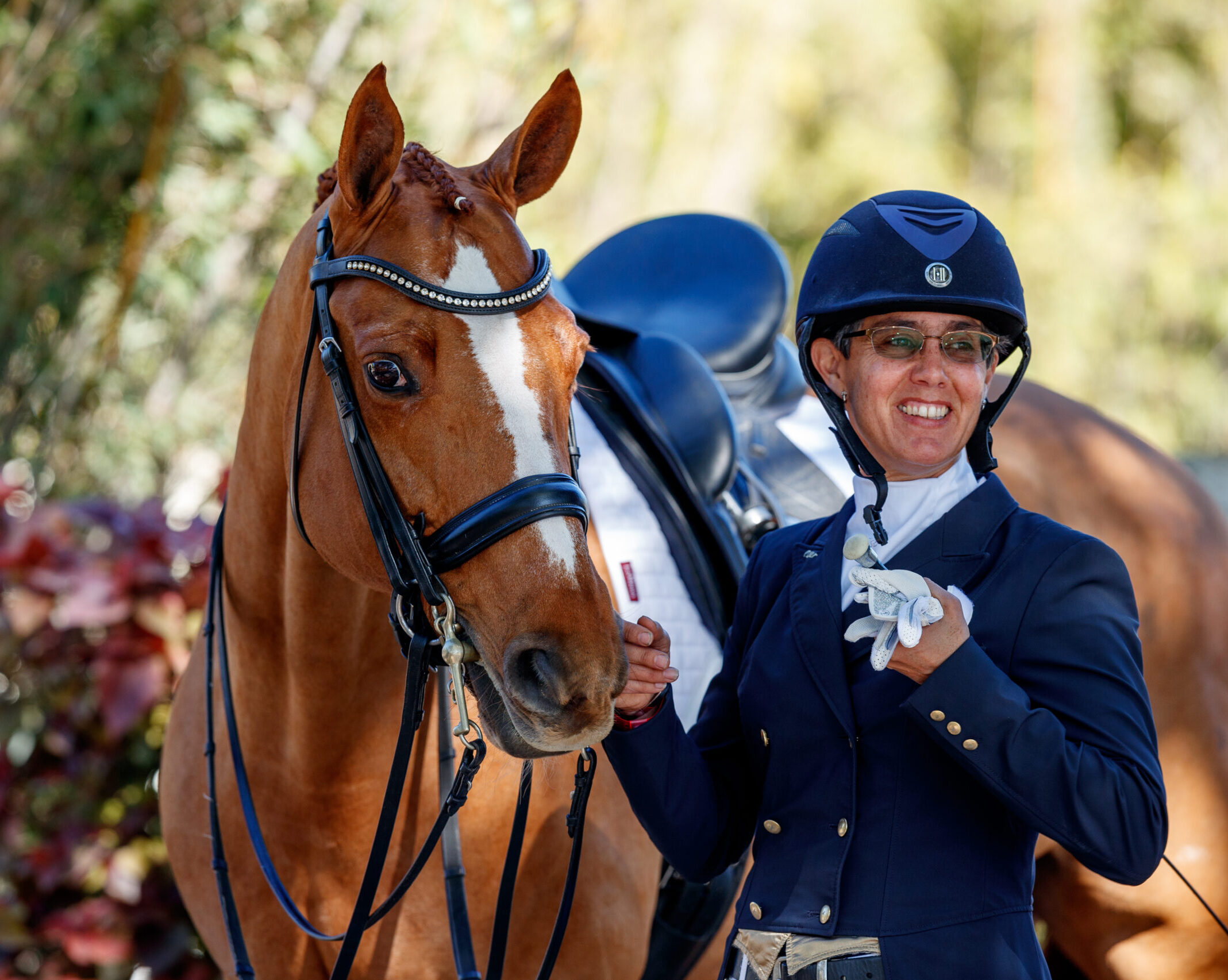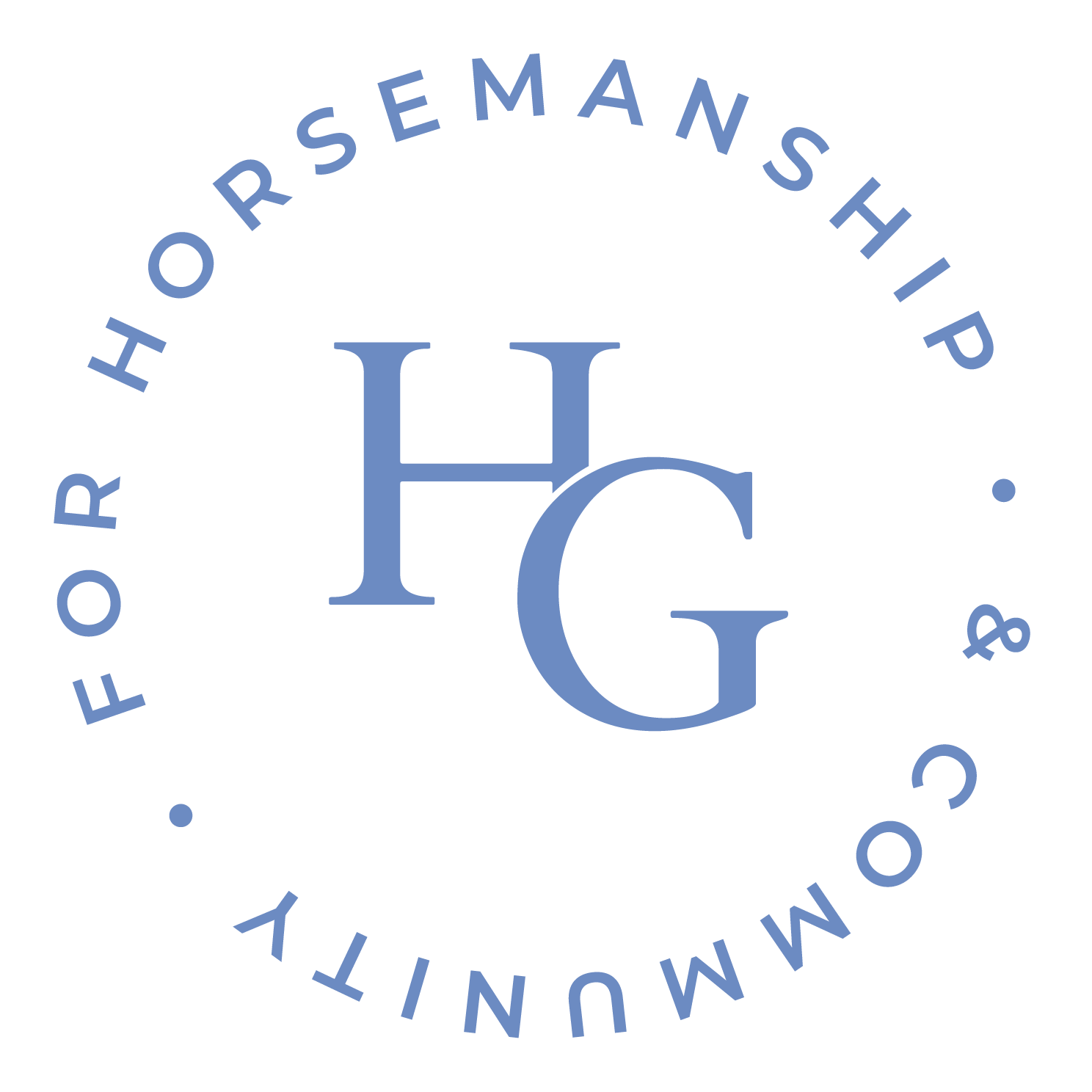Every Spanish article version on HorseGrooms ends with the same statement: “Traducido por Carmen Elisa Franco.” But who is the woman behind these Spanish words? We’re lifting up the curtain and giving Franco her due. From co-founding an association to speaking four languages to running her Q-Equestrian in Wellington, Florida, we introduce eight facts behind the multifaceted force behind HorseGrooms’ Spanish translations.
1. She Discovered Horses Via a Change in Summer Plans
Every summer, Franco and her family would travel from Colombia to Italy to spend time with her paternal grandmother. But one summer, Franco couldn’t do the annual migration due to her father’s work obligations.
“So that summer we stayed in Colombia, and we did a little bit of tennis, swimming and all kind of sports to keep us entertained,” she said. “One of them was going to riding school.”
Though her younger sister quickly discovered that she was allergic to horses, Franco and her older sister began a lifelong passion. At first, the riding club mainly focused on jumping, but eventually they started integrating dressage lessons, much to Franco’s delight.
“I was really bad at jumping,” Franco said. “The owner of the school was a military guy, so they started dressage lessons for the ones like me that didn’t have really much talent jumping. I could jump, just my heart wasn’t in it. I’m totally chicken. So, I just dedicated myself more to doing dressage since I was in Colombia.”
2. Horses > Architect
Franco graduated from Universidad de Los Andes (Bogotá, Colombia) in 1991 after studying to be an architect. But instead pursuing that line of work, she packed her bags and moved to Germany a year later.
“I love architecture; I love knowing architecture,” she said. “I didn’t like to be an architect—like having to deal with the client, the engineer, the builder, everybody. It’s too many hands in between the final product that you wanted to do. In horses, I feel like I have a more natural connection with them.”
She enrolled in the “Bereiter” program, a two or three-year apprentice and training program (with exams) in Warendorf, Germany. She studied under the Rietbrock family and earned her Bereiter title in 1995.
“It’s just amazing how that is a way of life there,” she said. “It’s not a sport, it’s just a way of living. It’s so much in the blood, in the tradition, in everyday life of everybody that it becomes so much more natural for the people there.”
3. She’s Represented Colombia Numerous Times
After her stint in Germany, she moved back to Colombia where she competed and gave lessons in addition to working for her father. She represented Colombia internationally in the Bolivian Games, where she earned team gold and individual silver and was a four-time Colombian National Dressage champion and four-time winner, individually and as a team, at the FEI World Dressage Challenge classes. In addition, she’s competed in four Nations Cup in Wellington, Florida, since moving to the U.S. permanently in 2004 as well as earned her bronze, silver and gold medals from the U.S. Dressage Federation.
4. Franco’s Her Own Groom
Part of her time in Germany involved an apprenticeship where she groomed to earn her Bereiter title, and through that she fell in love and appreciated the behind-the-scenes efforts that come together to bring a top result.
“I really loved that side of understanding how the performance of the horse depends on life around them,” she said, “not just about what happened in the saddle.”

And that hands-on approach has continued into her professional career as she still acts as the groom for her own horses.
“I am my own groom. I have an assistant, and I do the care of my horses,” she said. “I don’t like to receive the horse tacked up. I want to know if there is a little soreness here or there. If they ate completely or not. I know if they slept because they have stains everywhere or they have hay in the tail. I do all of that. And that has become a little bit of my part of being the rider that I am.
“It’s all foreign to me when the horses come tacked up and then I just get on,” she continued. “I feel like I’m missing a part of it.”
5. She Possesses a Knack for Languages
Franco speaks Italian, German, English and Spanish. Growing up in Colombia, her father enrolled her in Italian school to keep his heritage alive in the family. And while at her regular school, she learned English as well. But German was a different story.
“When I went to Germany, I didn’t know I word of German besides ‘Danke,’ and that’s it,” she said. “And then when I returned to Colombia, I could present my exams in riding in German and spoke quite well. I’m a little rusty right now because I only speak English here. But I kind of understand everything they say, and slowly I can talk with a couple of Germans.”
6. She (Seemingly) Never Runs out of Energy
In addition to running Q-Equestrian in Wellington, Florida, and competing, Franco fosters many passions—from photography to puzzles to volunteering.
Since her university days, she’s loved taking pictures. But she experienced a little hiatus when she first moved to the U.S.
“I had a camera in Colombia, but I never brought it here,” she said. “One day I decided, ‘Let’s get another camera.’ It’s not even a professional camera or anything. I love taking pictures, so it’s one of my pleasures in life: watching something that I took digitally printed in an image.”
She’s also the director of the Dressage Technical Committee for Federación Ecuestre de Colombia.
“I love volunteering [and] organizing things,” she said. “Right now, I’m the director of the Dressage [Technical] Committee in the federation in Colombia, and that’s of course is all volunteer work. I spend nights and days just putting charts through and doing budgets and planning on the calendar, and then writing the clinic [report] and getting the judge.”
7. Getting to Know Working Equitation
Through working with Lusitanos, Franco got involved with working equitation, a four-phase discipline competed on mostly Iberian horses.
“The first one is dressage; the second one is obstacles—like the trail obstacles here [in the U.S],” she said. “And that one is judged for style—like a dressage competition, but how do you open a gate; how do you lift a jug; how do you go over bridges or poles or things like that. The third phase is a speed phase over obstacles. And then the fourth phase is cattle sorting. So, it’s a very complete discipline.”
More prevalent in Europe, Franco worked to establish the discipline more Stateside. Though she didn’t compete herself, she co-founded the Confederation for Working Equitation.
“I really helped them more on the administrative part of the sport: developing all the associations, the rules, the test, the organizing shows,” she said. “I did a lot of shows in Texas, in Las Vegas, in North Carolina. So, it was quite fun, and that’s another whole group of riders.”
8. Contributing to HorseGrooms
Through her background as a groom in Germany, Franco understood all to well the struggles of the job and wanted to contribute to HorseGrooms.
“I know what is being a groom,” she said, “and the difficulties you have as a groom with the lack of acknowledgement of who we are.”
With a large percentage of Spanish-speaking grooms working in the industry, Franco wanted to grow HorseGrooms audience so that they, too, could have access to all the articles and information. So, whenever there’s an English article posted on HorseGrooms, Franco works on translating its Spanish counterpart.
“[Dinette] told me at the time she was developing HorseGrooms,” Franco said. “And I said, ‘Listen, there’s a big community of Spanish-speaking grooms, some of them legal, some of them not. But that would be amazing if the company is [offered] in Spanish.’ And then we started thinking, yeah, we can do that.”
Featured photo courtesy of Lily Forado.


